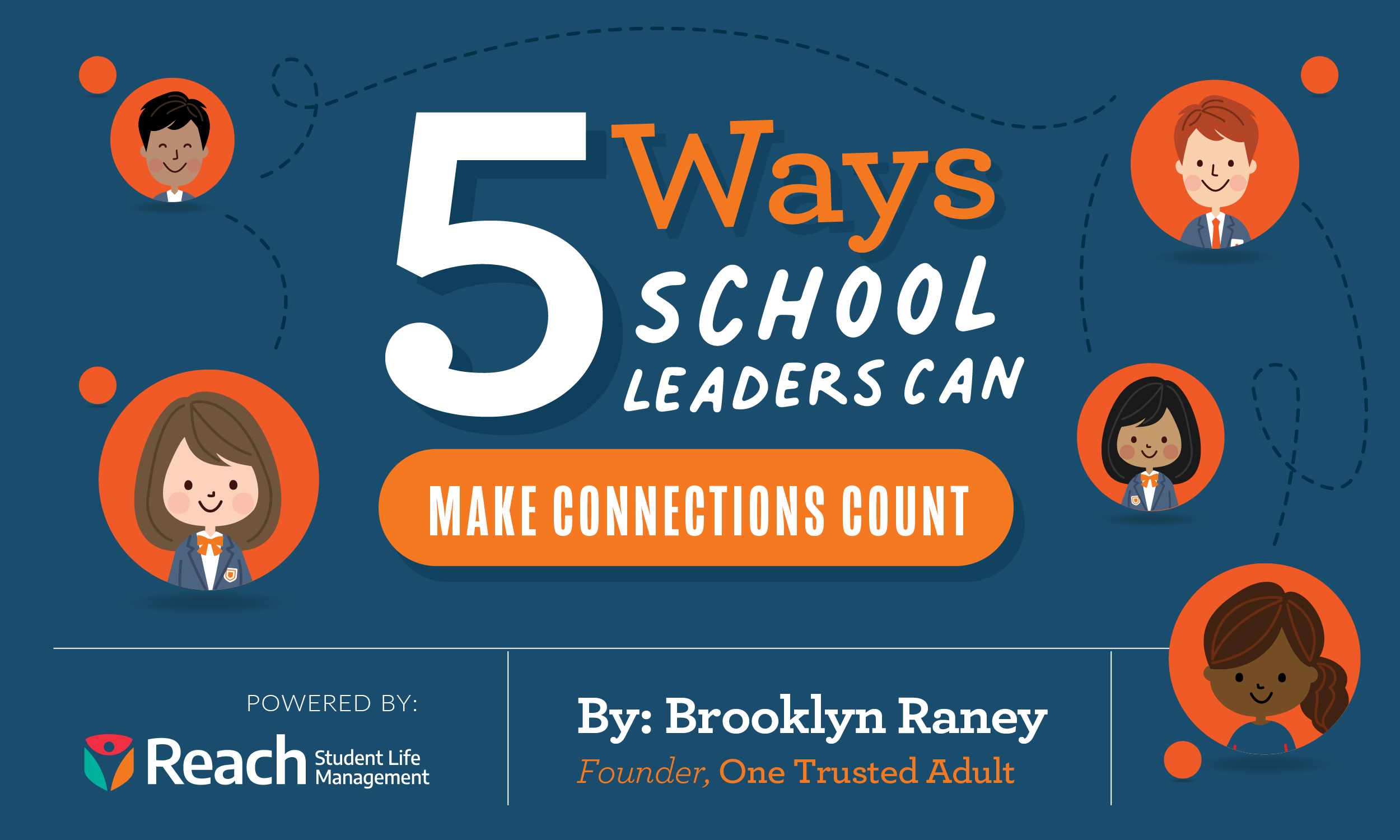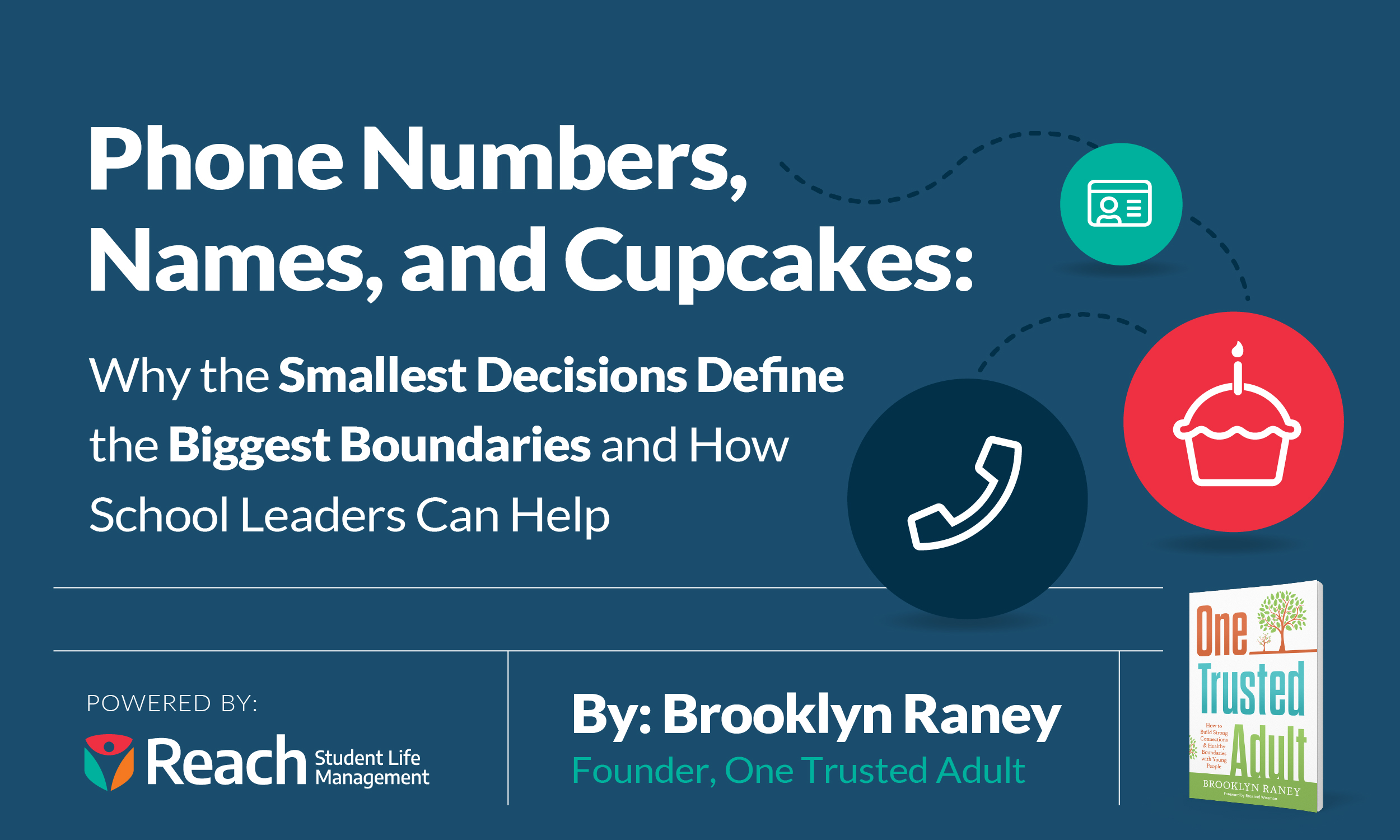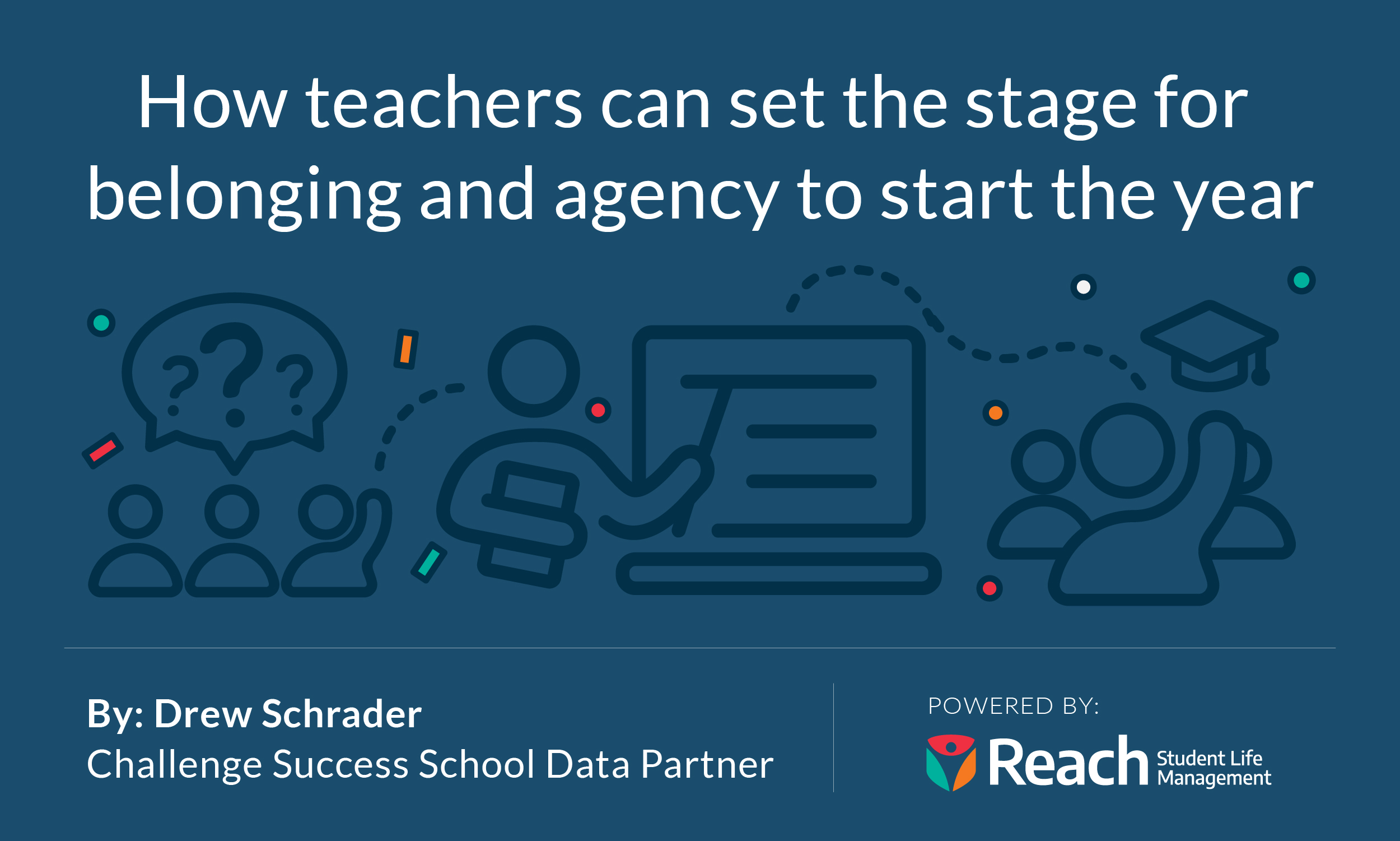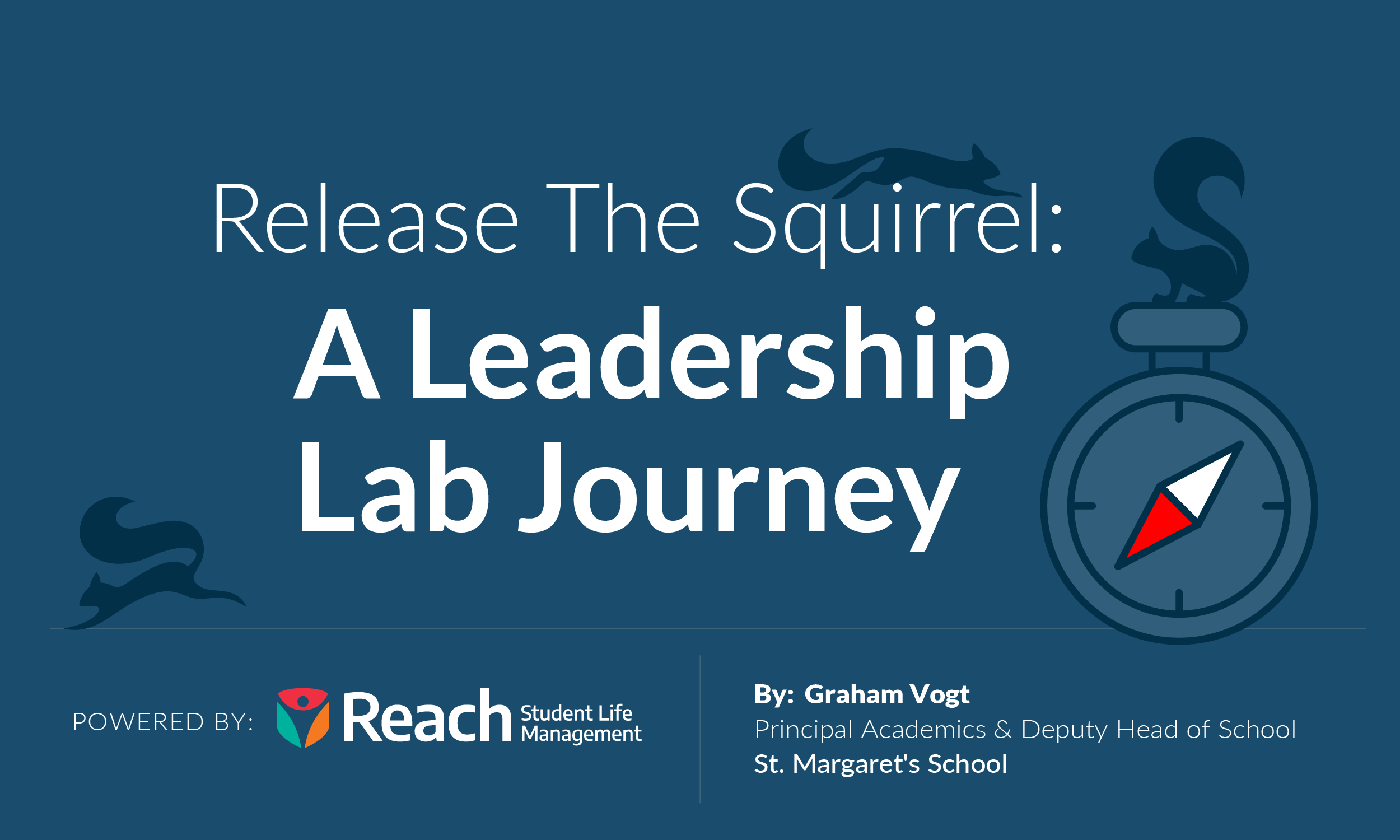
By Brooklyn Raney – Founder, One Trusted Adult
Supporting Middle and High School Educators in Building Trusted—and Boundaried—Relationships with Students
Connection and care in schools matter—the academic literature supporting that point is strong. When students feel a sense of connection and care in their classrooms, their availability for learning and engagement increase. But while the case for connection is convincing, the literature lacks detail about the definitions and limits of appropriate and beneficial teacher care for students. To further complicate matters, a mental health crisis among youth, ongoing effects of the pandemic, parents’ rights debates, and teacher burnout are adding layers of complexity to an already confused situation.
But there is hope! Here are five ways school leaders can make connections count in their communities:
1. Prioritize professional development on building trust and boundaries.
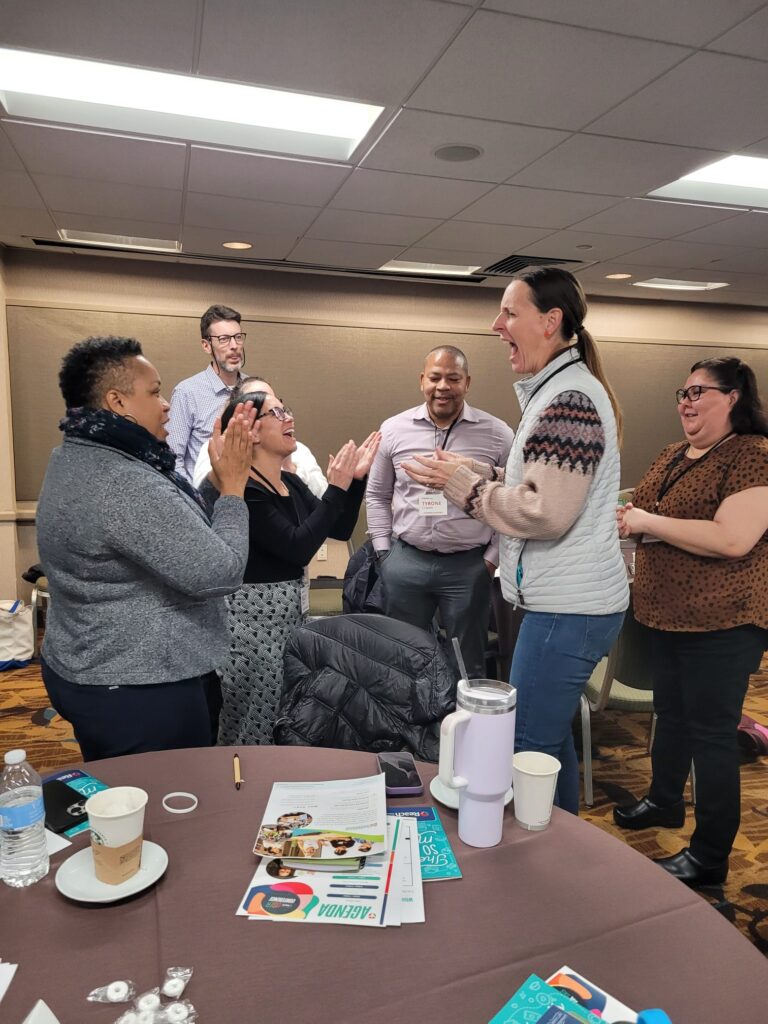
School connectedness begins with professional development that supports educators in building strong connections and healthy boundaries with students. Education degree programs and pre-service teacher preparation lack adequate training on boundaries, and little education exists around specific boundary-setting strategies that don’t depend on fear-based restraint and cautionary tales involving career-crumbling litigation.
Boundaries are a declaration of expectations and represent an agreed-upon way to live and work together—and professional development plays a critical role in moving the teacher-student boundary conversation from a fear-based list of don’ts to a trust-based list of dos. When school leaders invest in boundary training, the benefits and results are undeniable:
Boundaries protect youth.
When young people experience the firm and kind boundaries established by trustworthy adults, they are better able to gauge when they are in a dangerous or unhealthy situation with an adult who should not be trusted.
Boundaries support burnout immunity.
Young people need trusted adults in their lives, and they need them in their lives for the long haul. Current data suggests that a large majority of educators are feeling burned out. While a system-wide assessment is needed, there is also an opportunity for individual assessment to ensure teachers aren’t overextended in a way that makes them unable to sustainably fulfill their roles and responsibilities. School leaders must examine whether demands in their community outweigh resources, as well as how increasing resources, adding training, and redefining expectations can lead to healthy boundaries that support sustainable careers in education.
Boundaries clarify expectations.
Boundary conversations clarify what a school is and what a school isn’t and what a teacher is and what a teacher isn’t. Educators can’t be all things for everyone, and school leaders have a responsibility to outline the boundaries and limits of the educator’s role and the scope of their qualifications to support youth.
Boundaries create availability for learning.
Learning is inherently vulnerable. Before a learner can learn, they must feel safe enough to admit there is something they don’t know. A learning environment with boundaries that are clear and respected lets students feel safe to stretch and make mistakes along the way.
Boundaries build trust.
The simplest definition of trust is a feeling and knowing in me that I won’t be taken advantage of when I am at my most vulnerable with you. Trust cannot exist without respect and adherence to personal boundaries.
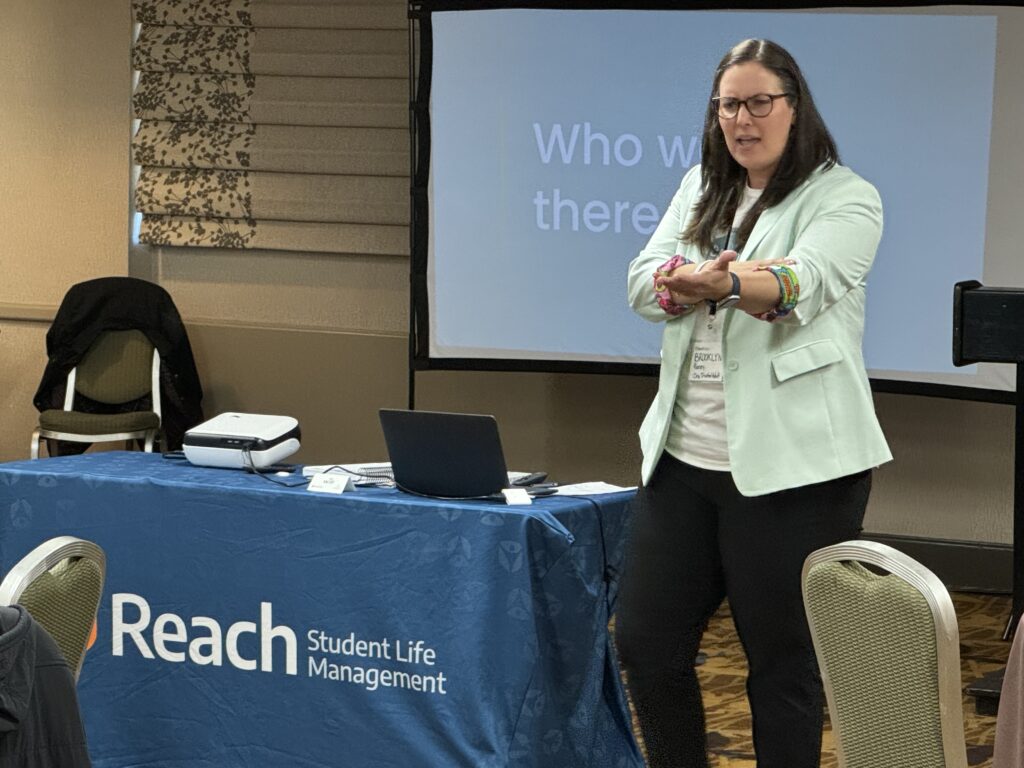
2. Communicate care expectations to students.
Once educators are equipped with the training, resources, and support they require to be the trusted and boundaried adults students need, students must be taught, encouraged, and given opportunities to connect. This includes teaching students about the expectations of care in their community. Sharing these expectations and creating common language and understanding around care with adults and students encourages students to advocate for the care they need in various situations.
3. Invest in advisory programs.

The third way school leaders can prioritize relationships and make connections count—all year long—is by investing in an advisory program. By advisory, we mean a small group of students assigned to an adult in the building, separate from any academic topic, with the purpose of building personal skills and strengthening community. Advisory should be a space and time dedicated each week to fostering peer-to-peer and adult-to-student connections through activities, problem solving, and discussion.
4. Train student leaders.
School leaders can further boost connections by formally training and inspiring students to lead and contribute in their community. Student leadership programs have been found to improve school climate and culture, prioritize student voice, build community and connections, and teach valuable leadership skills. They teach student leaders to recognize and model when and how to step up and step back while acting for the good of their community, which serves as a catalyst for school connectedness.
5. Assess connections in your community.
The goal of assessing connections between students and adults is twofold: to identify students who do (or don’t) have a connection with an adult at school and to help ensure that the work of being a trusted adult is shared among all the adults in the community and does not overburden a few individuals.
Many schools implement connection assessments twice a year, once at the beginning of the school year and once in the second half of the school year. Some schools do this through in-depth climate/culture surveys, while others dedicate time in advisory to teaching students about trusted adults and asking students directly if they have such a person in their corner.
__________________
Recognizing the importance of school connectedness and the benefits all constituents of a school experience when they feel known and valued, OTA has dedicated the past five years to developing programs that support schools in cultivating connection and a sense of belonging in their school communities.
From self-paced online professional development to group experiences and from boundaried advisory programming to youth leadership training, we customize implementation programs to fit the needs of your unique school. Let us help you achieve the greatest sense of community and connection your school has ever had, and make it a place where students and adults want to show up at their best each and every day. Reach out to info@onetrustedadult.com to get started by scheduling a meeting with an OTA coach.
